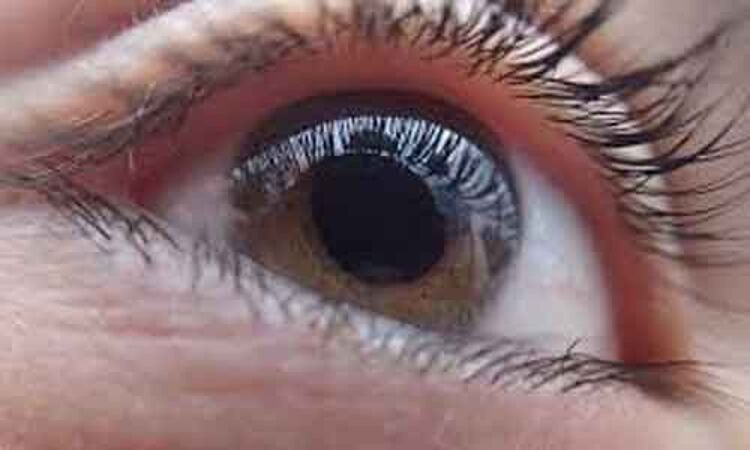- Home
- Medical news & Guidelines
- Anesthesiology
- Cardiology and CTVS
- Critical Care
- Dentistry
- Dermatology
- Diabetes and Endocrinology
- ENT
- Gastroenterology
- Medicine
- Nephrology
- Neurology
- Obstretics-Gynaecology
- Oncology
- Ophthalmology
- Orthopaedics
- Pediatrics-Neonatology
- Psychiatry
- Pulmonology
- Radiology
- Surgery
- Urology
- Laboratory Medicine
- Diet
- Nursing
- Paramedical
- Physiotherapy
- Health news
- Fact Check
- Bone Health Fact Check
- Brain Health Fact Check
- Cancer Related Fact Check
- Child Care Fact Check
- Dental and oral health fact check
- Diabetes and metabolic health fact check
- Diet and Nutrition Fact Check
- Eye and ENT Care Fact Check
- Fitness fact check
- Gut health fact check
- Heart health fact check
- Kidney health fact check
- Medical education fact check
- Men's health fact check
- Respiratory fact check
- Skin and hair care fact check
- Vaccine and Immunization fact check
- Women's health fact check
- AYUSH
- State News
- Andaman and Nicobar Islands
- Andhra Pradesh
- Arunachal Pradesh
- Assam
- Bihar
- Chandigarh
- Chattisgarh
- Dadra and Nagar Haveli
- Daman and Diu
- Delhi
- Goa
- Gujarat
- Haryana
- Himachal Pradesh
- Jammu & Kashmir
- Jharkhand
- Karnataka
- Kerala
- Ladakh
- Lakshadweep
- Madhya Pradesh
- Maharashtra
- Manipur
- Meghalaya
- Mizoram
- Nagaland
- Odisha
- Puducherry
- Punjab
- Rajasthan
- Sikkim
- Tamil Nadu
- Telangana
- Tripura
- Uttar Pradesh
- Uttrakhand
- West Bengal
- Medical Education
- Industry
Ocular hypertension in glaucoma patients is related to higher central corneal thickness: Study

USA: In a new study conducted by Kristi Y. Wu and her team it was shown that in glaucoma patients, greater intraocular pressure and ocular hypertension were related more to due to thicker central cornea than metabolic syndrome. The findings of this study were published in the Journal of Glaucoma.
Metabolic syndrome was linked to increased intraocular pressure and thicker central corneal tissue in glaucoma patients. Ocular hypertension was more prevalent in patients with metabolic syndrome. Therefore, the aim of this study was to investigate whether patients with metabolic syndrome are more likely to develop glaucoma and ocular hypertension. Glaucoma is also known as glaucomatous optic neuropathy.
For this study, Patients in Olmsted County, Minnesota, were classified as having metabolic syndrome based on diagnosis codes, laboratory values, and/or medication use that met three or more of the five standard criteria for diagnosing metabolic syndrome: systemic hypertension, hyperglycemia, hypertriglyceridemia, low high-density lipoprotein cholesterol, and central adiposity defined by increased BMI.
Using diagnostic codes, patients with glaucoma, including primary open-angle, low tension, pigment dispersion, and pseudo-exfoliation, were identified. Individual glaucoma patients' charts were reviewed to collect visual acuity, visual field mean deviation, cup to disc ratio, intraocular pressure, central corneal thickness, retinal nerve fibre layer thickness, and intraocular pressure treatment. Patients with ocular hypertension were identified and assessed independently.
The key findings of this study were as follows:
1. Patients with glaucoma who had metabolic syndrome exhibited higher intraocular pressure and larger central corneal thickness than those who did not.
2. There was no longer a significant difference in intraocular pressure between groups after adjusting for central corneal thickness.
3. Metabolic syndrome was also linked to the diagnosis of ocular hypertension, and while central corneal thickness was larger in individuals with metabolic syndrome, the difference was not statistically significant.
In conclusion, Although patients with MetS are not at an elevated risk of glaucoma, their higher central corneal thickness, and other anatomic variables may enhance their chances of being diagnosed with ocular hypertension.
Reference:
Wu, K. Y., Hodge, D. O., White, L. J., McDonald, J., & Roddy, G. W. (2021). Association of Metabolic Syndrome With Glaucoma and Ocular Hypertension in a Midwest United States Population. In Journal of Glaucoma (Vol. 31, Issue 6, pp. e18–e31). Ovid Technologies (Wolters Kluwer Health). https://doi.org/10.1097/ijg.0000000000001968
Neuroscience Masters graduate
Jacinthlyn Sylvia, a Neuroscience Master's graduate from Chennai has worked extensively in deciphering the neurobiology of cognition and motor control in aging. She also has spread-out exposure to Neurosurgery from her Bachelor’s. She is currently involved in active Neuro-Oncology research. She is an upcoming neuroscientist with a fiery passion for writing. Her news cover at Medical Dialogues feature recent discoveries and updates from the healthcare and biomedical research fields. She can be reached at editorial@medicaldialogues.in
Dr Kamal Kant Kohli-MBBS, DTCD- a chest specialist with more than 30 years of practice and a flair for writing clinical articles, Dr Kamal Kant Kohli joined Medical Dialogues as a Chief Editor of Medical News. Besides writing articles, as an editor, he proofreads and verifies all the medical content published on Medical Dialogues including those coming from journals, studies,medical conferences,guidelines etc. Email: drkohli@medicaldialogues.in. Contact no. 011-43720751


